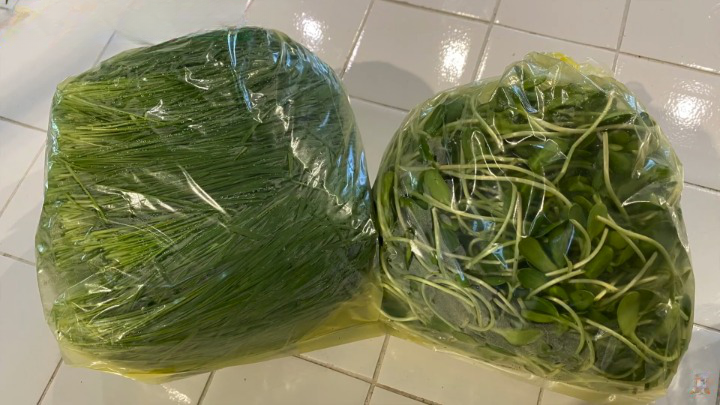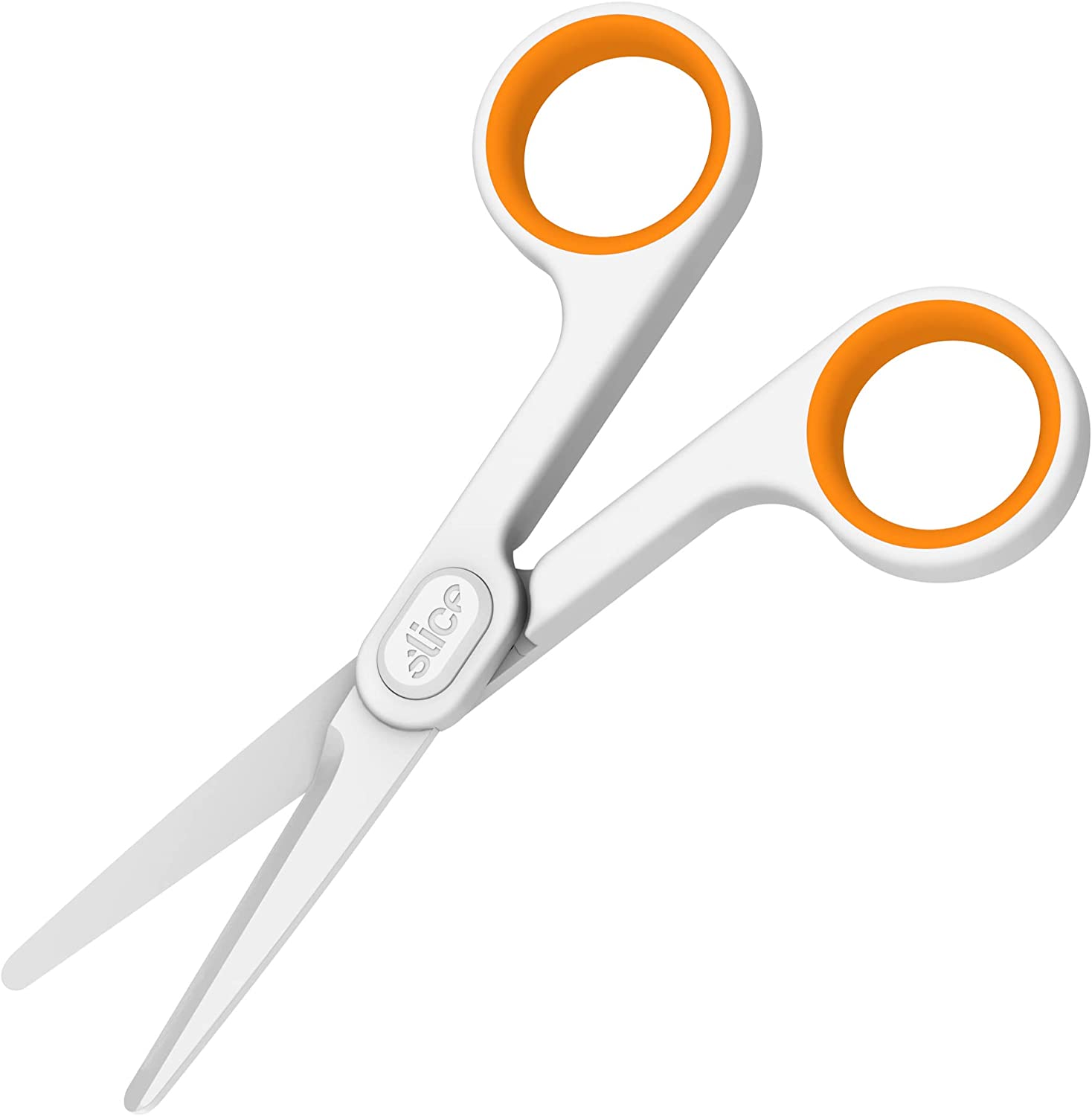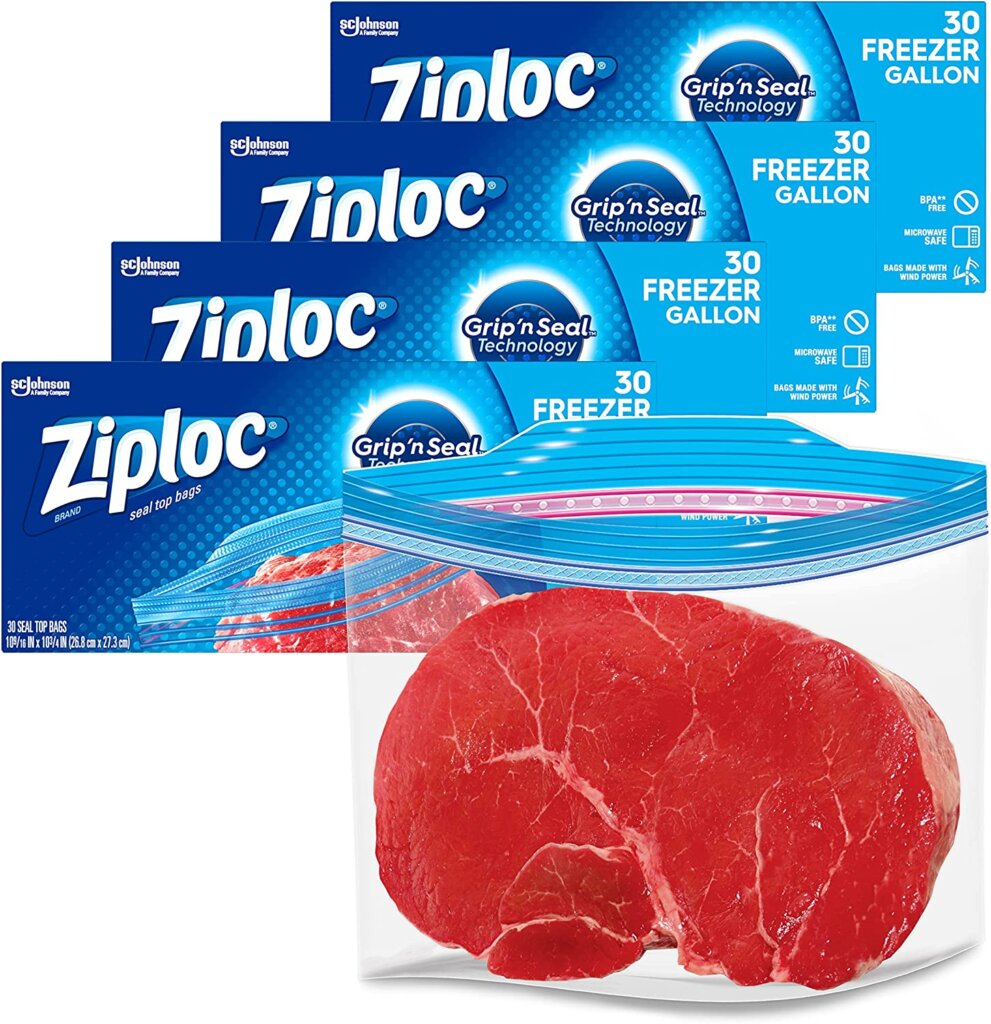So, you have harvested your batch of microgreens or bought a pound of this nutritious superfood from the grocery store.
But, now you might be wondering, “how do I store these microgreens and keep them fresh?”
The best way to store microgreens (and retain their freshness for a long time) is to keep them in the refrigerator in an air-tight container or a Ziploc bag. Your microgreens should be dry before storing.
If stored this way, the microgreens will stay healthy, crunchy, and colorful for at least a week.
Today, we share how to store microgreens correctly and some best practices suggested by experienced gardeners.
So, let’s jump in.

Table of Contents
Tips to Remember BEFORE Storing Microgreens
Microgreens are known as superfoods for their nutritional value.
According to a study by professors at the University of Maryland, microgreens tend to have higher concentrations of vitamins, proteins, and other nutrients than mature vegetables.
So, the fresher the microgreens are, the more nutritious they are.

However, most people don’t consume microgreens in large proportions. Thus, you need to know how to store microgreens longer – without losing their nutrients.
Here are a few things to remember before storing your microgreens.
- Microgreens should be healthy and fresh, not wilted.
- They must not be damaged during harvesting.
- Do not store wet microgreens; if they’re, they will rot.
If you are growing microgreens without soil, you will have an easy time harvesting. However, if you have a soil-grown harvest, please ensure there is as little soil as possible on the microgreens.
Once you harvest the microgreens, quickly put them in an air-tight container.
At room temperature, microgreens tend to become dry.
How Do You Store Fresh Microgreens?
Under proper conditions, the microgreens’ shelf life is up to 7 to 10 days. But keep in mind: the fresher the harvest, the more nutrients you will get.
Microgreens must always be stored in a fridge. Cool conditions are ideal for extending their shelf life and retaining their structure longer.
Here are the best practices for storing your microgreens properly.
Use Ceramic Materials to Harvest
While harvesting your microgreens, use scissors or knives made from ceramic. The material is non-toxic and lightweight, which provides easy agility while chopping your greens.

Slice 10544 Ceramic Scissors
- Made from food-grade ceramic
- Never rusts
- Durable GFN (glass-filled nylon) handles
Metals transfer ions to the cut plants leading them to oxidize quickly. Ceramic scissors and knives don’t do so. Hence, use ceramic equipment for harvesting.
Store the Microgreens in Air-Tight Containers
If the quantity is less, you can use an air-tight clamshell to store your microgreens.

Karat Earth Hinged Clamshell Container, 6″ x 6″
- Compostable Bagasse Hinged Containers
- BPI-Certified compostable and biodegradable
- Size: 6″x6″
If you store microgreens in large proportions, you can use Keep It Fresh produce bags.

Keep it Fresh Produce Bags – BPA Free
- Ziploc Gallon Food Storage Freezer Bags
- Made from food-grade BPA-free polyethylene
- Size: 17” x 7” x 4”
You can even use Ziploc bags or resealable bags to store your microgreens. Just ensure that you seal the bags properly.

Ziploc Gallon Food Storage Freezer Bags
- Made from BPA-free plastic
- Grip n’ Seal technology for easier grip
- Designed to protect food from freezer burn
Set the Temperature Right
No matter what bags or containers you use to store microgreens, you should always put them in the fridge.
The ideal temperature of your fridge should be between 1.66° C to 4.44° C (35° F-40° F).
Different temperatures lead to different shelf life. A study report published in the Journal of Young Investigators states that microgreens stored at 50°F demonstrated a shelf life of 7-14 days, but if the temperature is reduced to 40°F, the shelf life increases to 14-21 days.
Never freeze your microgreens. Putting your microgreens in the freezer might make them dry. Also, if they freeze, you must thaw them before eating them.
This thawing can damage the texture of your microgreens, and you will lose that crunch – and the delicious taste.
Irregular temperatures and excess moisture are two of the biggest reasons that might lead to mold growth in your microgreens. So, avoid opening your fridge multiple times.
You can use a mini-fridge to store the microgreens separately.
Home Remedies If Microgreens Dry Up
Sometimes, things can go wrong even if you do everything right. In such cases, follow these quick home remedies.
- Some gardeners suggest keeping a damp paper towel inside your bag if your microgreens are getting dry in the fridge.
- You can also keep the bag a little open – just a little – for optimum air circulation.
- Keep the microgreens away from excess moisture, and make sure the air circulation is optimum.
Remember that microgreens should always be refrigerated but not frozen. Otherwise, they will get soggy and rot the moment they unfreeze.
Now that you know how to store microgreens, let’s discuss how to store the seeds.
How to Store Microgreens in Soil?
Did you know you can store your microgreens in the soil itself?
But it is only recommended if you are growing microgreens for immediate consumption or in smaller quantities (for example: in coconut shells).
Chop as many microgreens as you need and keep the rest unharvested.
If you’re growing varieties of microgreens, we suggest you divide the tray into multiple sections and grow each type separately. This will allow you to harvest the ready ones without disturbing those still growing.
Need help with which microgreens to grow? Here is the list of the 9 most profitable microgreens to grow.
How to Store Microgreens Seeds? [For Growers]
Storing microgreens seeds is different from storing harvested microgreens. You don’t want them to grow mold even before you sow them, do you?
Seeds also attract pests like cockroaches and rodents, so storing them in an air-tight glass or metal container above the floor level is advised.
However, keeping your seeds away from moisture is crucial.
You can store your microgreens seeds at a temperature varying from 55°F to 70°F and keep small bags of baking soda or silica within the containers. These bags absorb moisture, preventing your seeds from going bad.
You can use a moisture meter to keep a check on the moisture levels.
How to Use Stored Microgreens in Cooking?
Now that you have learned about how to store microgreens, let’s know a few ways to use them.
You can do a lot with microgreens, but they are primarily used in salads, garnishing, and as flavor enhancers. The green color of the microgreens makes it an excellent choice for garnishing your flavorful dishes.
If you are preparing a potato or an egg salad, then you can use these microgreens to add a punch to your dishes and make them nutrition-packed.
If you still want some inspiration, check out these amazingly delicious microgreens salad recipes you can make.
We have compiled some of the best-tasting microgreens that can make your taste buds jump and add a punch of nutrition to your daily meals.
Frequently Asked Questions (FAQs)
How to tell if microgreens are bad?
If you notice signs like slimy touch, foul odor, or white spots, just throw away the microgreens. They have rotten.
How long can you store microgreens?
You should always store microgreens at a cool temperature. Microgreens are good for 10 to 12 days in the fridge.
Can you freeze microgreens?
It is not recommended to freeze microgreens. Because the moment they unfreeze, they will wilt and lose their crunch and taste.
Can I store microgreens in mason jars?
Yes, you can store microgreens in mason jars. Just make sure the lids are tight, and the jar is clean. An unclean jar or excessive moisture might cause your microgreens to rot.
Do microgreens need to be washed before storing?
No, never store wet microgreens. We suggest storing dry microgreens and washing them just before you use them.
So, Are You Ready to Store Your Microgreens?
We hope this article showed you how to store microgreens the right way.
We also looked at some prerequisites you need to look at before shoving the microgreens in the containers.
Use the right equipment, keep a tab on the moisture levels, and maintain cool temperatures if you want to store your microgreens for a long time.


